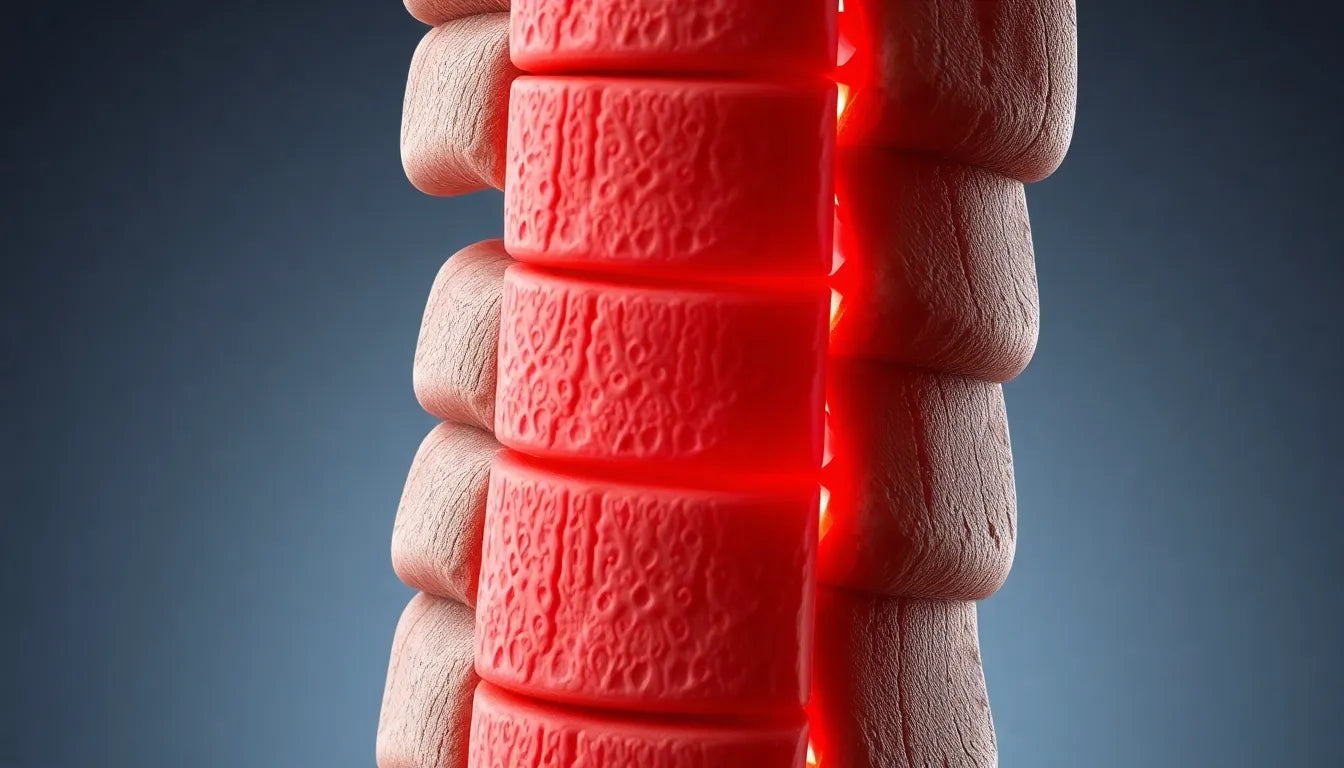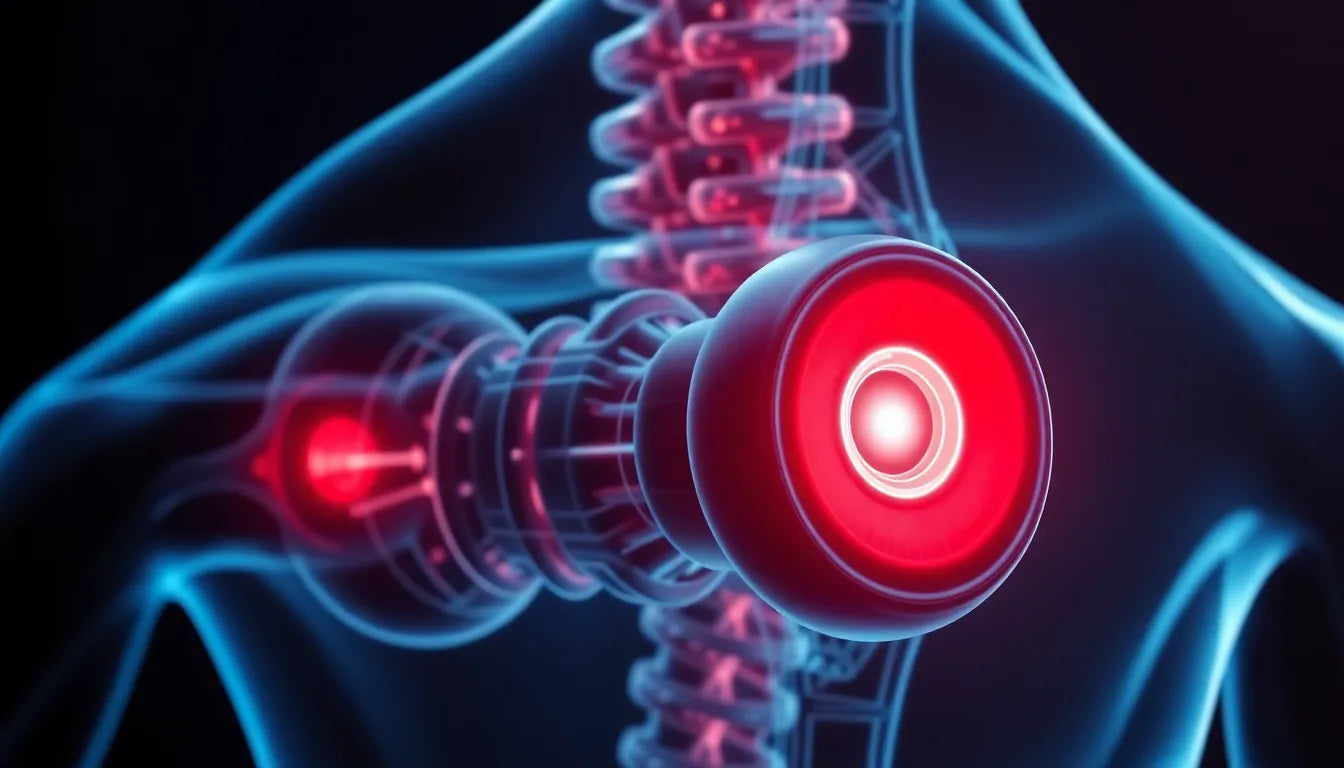Dealing with a herniated disc, especially at the L4-L5 level, can be a daunting challenge, particularly when it comes to getting a good night's sleep. A herniated disc occurs when the soft cushion of tissue between the bones in your spine pushes out, which can lead to significant discomfort and pain. The L4-L5 region is a common site for herniation, often resulting in symptoms such as lower back pain and sciatica, which can make sleeping a real struggle. Understanding this condition is the first step towards managing it effectively, and ensuring you get the rest you need is crucial for recovery and pain management.
Why sleeping with a herniated disc can be challenging
Sleeping with a herniated disc at L4-L5 presents unique challenges. The disc herniation can press on nerves, causing pain that radiates down the legs, and finding a comfortable position can feel impossible. This discomfort often leads to restless nights, which in turn can exacerbate symptoms and slow down recovery. Pain relief and proper sleep are intertwined, as a lack of rest can increase stress and inflammation, further aggravating the condition.
The objective of this blog is to equip you with practical tips and strategies that can help you find comfort and improve your sleep quality, even with a herniated disc. By adopting specific sleeping positions and making some adjustments to your sleep environment, you can significantly reduce pain and enhance your overall well-being. These small changes can make a big difference in managing the symptoms and promoting a more restful sleep, which is essential for healing.
In the following sections, we will explore various sleeping positions that can help alleviate pressure on the herniated disc, as well as the importance of selecting the right mattress and pillow. Additionally, we will delve into sleep hygiene practices that can further enhance your ability to rest well despite the challenges posed by a herniated disc. By the end of this blog, you'll have a comprehensive toolkit of strategies to help you sleep better and support your recovery journey.
Optimal sleeping positions for herniated disc relief
Finding the right sleeping position is crucial for those dealing with a herniated disc at the L4-L5 level. Proper alignment can significantly reduce pain and promote healing. Let's explore some optimal positions that can help alleviate discomfort.
Back sleeping for spinal alignment
Sleeping on your back is often recommended for individuals with a herniated disc, as it helps maintain the spine's natural alignment. This position minimizes the pressure on the herniated disc and surrounding nerves. To enhance comfort, place a pillow under your knees. This simple adjustment supports the natural curve of your lower back, reducing strain and promoting relaxation.
Side sleeping with strategic support
If you prefer sleeping on your side, it's essential to maintain proper alignment to avoid exacerbating pain. Placing a pillow between your knees can help keep your hips and spine aligned, preventing unnecessary twisting. Additionally, consider elevating your legs on a pillow or inserting a rolled-up towel between your waist and the mattress for added support. These adjustments can significantly reduce pressure on the herniated disc and alleviate discomfort.
Avoid stomach sleeping
Stomach sleeping is generally discouraged for those with a herniated disc, especially at the L4-L5 level. This position can strain the neck and lower back, potentially worsening symptoms. If you find it challenging to change this habit, try placing a thin pillow under your pelvis and lower abdomen to reduce stress on your spine.
Choosing the right mattress and pillow
The quality of your mattress and pillow can greatly influence your comfort and spinal health. Selecting the right ones can make a significant difference in managing herniated disc symptoms.
Mattress selection for spinal support
A medium-firm mattress is often recommended for individuals with a herniated disc. This type of mattress provides the necessary support to keep your spine aligned while still offering comfort. Memory foam mattresses are particularly beneficial as they contour to the body's shape, reducing pressure points and supporting proper spinal alignment. Investing in a quality mattress can be a game-changer for your sleep quality and pain management.
Pillow selection for neck and spine alignment
Choosing the right pillow is equally important. A supportive pillow can help maintain the alignment of your neck and spine, preventing additional strain. For back sleepers, a pillow that supports the natural curve of your neck is ideal. Side sleepers should opt for a thicker pillow to fill the space between the shoulder and neck, ensuring proper alignment. Experiment with different pillows to find the one that best suits your sleeping position and offers the most comfort.
Sleep hygiene for better sleep quality
Beyond sleeping positions and support, maintaining good sleep hygiene is essential for improving rest and managing pain associated with a herniated disc.
Consistent sleep schedule
Establishing a regular sleep schedule can significantly enhance your sleep quality. Going to bed and waking up at the same time each day helps regulate your body's internal clock, promoting deeper and more restorative sleep. Consistency is key, even on weekends, to maintain a healthy sleep pattern.
Creating a sleep-friendly environment
Your sleep environment plays a crucial role in your ability to rest well. Ensure your bedroom is conducive to sleep by reducing noise and light. Consider using blackout curtains, earplugs, or a white noise machine to create a peaceful atmosphere. Keeping the room cool and comfortable can also aid in achieving better sleep.
Avoiding caffeine and stimulating activities
It's important to be mindful of what you consume before bedtime. Avoid caffeine and other stimulants in the hours leading up to sleep, as they can interfere with your ability to fall asleep and stay asleep. Additionally, limit stimulating activities such as using electronic devices or engaging in intense exercise close to bedtime. Instead, opt for relaxing activities like reading or gentle stretching to prepare your body for rest.
By implementing these strategies, you can create an environment and routine that supports restful sleep, even with the challenges of a herniated disc. In the next section, we'll explore the benefits of incorporating physical therapy and exercises into your routine to further enhance your recovery and sleep quality.
Incorporating physical therapy and exercises
Integrating physical therapy and exercises into your routine can play a crucial role in managing a herniated disc at the L4-L5 level. These activities not only help in alleviating pain but also strengthen the back, reducing the pressure on the herniated disc and promoting healing.
Benefits of physical therapy
Physical therapy offers a personalized approach to managing herniated disc symptoms. A trained therapist can guide you through exercises tailored to your specific condition, focusing on strengthening the muscles that support your spine. This targeted approach helps in reducing inflammation, improving mobility, and enhancing overall spinal health. By regularly engaging in physical therapy, you can experience significant improvements in pain management and function.
Recommended exercises
In addition to professional physical therapy, there are several exercises you can perform at home to support your recovery. These exercises should be gentle and focused on stretching and strengthening the back and core muscles. Here are some examples:
- Pelvic tilts: Lie on your back with your knees bent and feet flat on the floor. Gently flatten your lower back against the floor by tightening your abdominal muscles. Hold for a few seconds, then release. Repeat 10 times.
- Knee-to-chest stretch: Lie on your back with your knees bent. Slowly bring one knee up to your chest, holding it with your hands. Hold the stretch for 15-30 seconds, then switch legs. Repeat 2-3 times on each side.
- Cat-cow stretch: Begin on your hands and knees. Arch your back towards the ceiling (cat pose), then slowly lower it towards the floor while lifting your head (cow pose). Repeat 10 times, moving smoothly between poses.
- Partial crunches: Lie on your back with your knees bent and arms crossed over your chest. Tighten your abdominal muscles and raise your shoulders off the floor slightly. Hold for a second, then slowly lower back down. Repeat 10 times.
It's important to perform these exercises gently and avoid any movements that cause pain. Consulting with a healthcare professional before starting any exercise program is advisable to ensure safety and effectiveness.
Concluding thoughts
Managing sleep with a herniated disc at the L4-L5 level requires a comprehensive approach that includes optimal sleeping positions, the right mattress and pillow, good sleep hygiene, and physical therapy. By adopting these strategies, you can significantly reduce pain and improve your sleep quality, which is essential for recovery. Remember, finding comfort is a journey, and small adjustments can lead to significant improvements in your overall well-being.
Frequently asked questions
What is the best sleeping position for a herniated disc L4-L5?
Sleeping on your back with a pillow under the knees is generally recommended, as it helps maintain spinal alignment and reduces pressure on the herniated disc.
Can a mattress affect my herniated disc pain?
Yes, a medium-firm mattress can provide the necessary support to alleviate pain by maintaining proper spinal alignment.
Are there specific exercises to help with a herniated disc?
Yes, gentle stretches and strengthening exercises like pelvic tilts and knee-to-chest stretches can be beneficial. Consult a physical therapist for personalized recommendations.
How can I improve my sleep hygiene to manage pain better?
Maintain a consistent sleep schedule, create a sleep-friendly environment by reducing noise and light, and avoid caffeine before bed to enhance sleep quality.
Is it okay to sleep on my stomach with a herniated disc?
It is generally discouraged as it can strain the neck and lower back, potentially worsening symptoms. If unavoidable, consider placing a thin pillow under your pelvis to reduce strain.
Sources
- New York Bone & Joint Specialists. (n.d.). "The Best Ways to Sit and Sleep if You Have a Herniated Disc."
- Better Health Alaska. (n.d.). "Bulging Disc Sleep Tips."
- SEMrush. (n.d.). "SERP Analysis: How to Analyze Search Results."
- Florida Surgery Consultants. (n.d.). "How to Sleep with a Herniated Disc."
- Dr. Kevin Pauza. (n.d.). "How to Sleep and Sit with a Herniated Disc Comfortably."


















